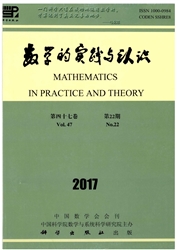

 中文摘要:
中文摘要:
TFP是有关科技与经济增长之间关系研究领域的一个经久不衰的话题,但针对不同国家的TFP的比较研究较少.收集了美、日、中、俄等19个国家1999—2006年的国内生产总值、固定资产投资额、劳动力数、专利数、R&D人员数、R&D经费投入等数据,采用经典的生产函数模型,用面板数据计量方法,从单位根检验、协整关系和面板模型的选择等方面进行严格的推导,计算了各国的TFP值,然后将TFP值与专利数、R&D人员数、R&D经费投入等变量之间进行了相关分析,得到了一系列富有启示意义的结论.
 英文摘要:
英文摘要:
TFP is an enduring research topic in the field ofrelationship between science and economic growth. But there is lack of the comparative studies of TFP in different countries.This paper collected GDP, investment in fixed assets, labor, number of Triadic patent families, researchers, gross domestic expenditure on R&D of U.S., Japan, China, Russia and other 19 countries from 1999 to 2006, using the classical production function model, and the panel data methods, through strictly deduce from the unit root test, panel cointegration relations and the choice of model, calculated the TFP, and analyze the relationship among TFP, number of patents, researchers, gross domestic expenditure on R&D. Finally revealed significant conclusions.
 同期刊论文项目
同期刊论文项目
 同项目期刊论文
同项目期刊论文
 期刊信息
期刊信息
